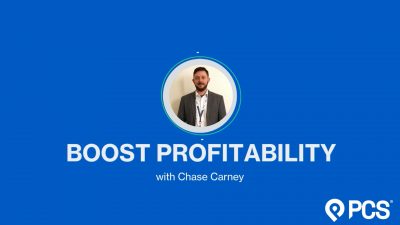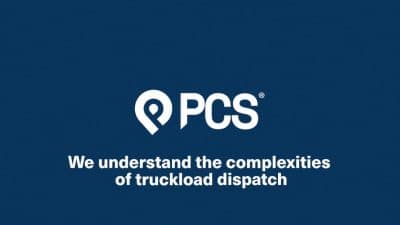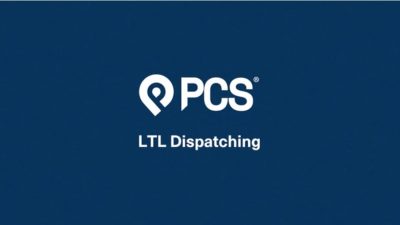Transcript
Hello, and thank you for joining us. My name is Chase, and in this video we’re going to go over some different ideas and concepts that can help you run a more effective, more efficient operation. We’ll more specifically be looking at some different tools that can help you manage and retain your best drivers throughout the dispatch process, the mobile app, and even down into accounting when it comes to driver payroll, and just kind of how some of those processes can be a little bit easier with things less likely to fall through the cracks.
So I’m going to go ahead and share my screen here in just a second and we’re going to start out by just dispatching a driver to a load and show you how that kind of coincides with payroll and then follow that into the mobile app. So let me go ahead and do that here and the first thing you’re going to see is the dispatch manager screen, just the main screen where you’re monitoring your day to day operations from.
And I’ve got a load here that’s waiting to be dispatched. So we’ll just very quickly right click and dispatch this to one of my drivers here. Now I have my drivers pre assigned with trucks and trailers. You don’t have to do it this way, but in my case here, I can just pull in a unit number and it’ll pop up my driver truck and then I can go ahead and assign a trailer if I need to.
Now, something I want to point out is as this is happening, my driver pay is also being assigned. This particular driver is set up at 75 percent of the line haul, so it’s just doing the math there for me to plug in his dollar amounts. We do have the ability to pay mileage rates as well, which you can put a loaded and empty rate for, along with the loaded and empty miles coming from PC-Miler to once again calculate that driver’s payment.
Of course, there’s also the option for flat rates, hourly rates, a couple others if you need them. But for those that are calculating automatically, as I assign the driver, it just plugs in that dollar amount. And the benefit there is that now that $1,800 driver pay is already created in the system. And it’s going to be flowing through to the accounting side into my driver payroll and settlements. So that later on, later in the week maybe, when I go to do payroll, that $1,800 is already there, pre calculated, ready for selection. So it just makes the process a lot easier for the dispatch team, for the accounting team and it helps ensure that your drivers are getting accurate payments. So hopefully it saves you some of those driver phone calls.
Now, as soon as we do this, I would usually check this box here to send it to my driver’s mobile app, but we’ll save that, and now that load has been dispatched, so it’s going to drop down here into the bottom section, and at this point, my driver gets a notification on their phone or their tablet, and this will work across Android, Apple products, any modern smart device will be fine.
But now the driver will see that they’ve got a load assigned to them, so the driver can tap on that load and see all of the basic details that they’re going to need to facilitate this, including the truck and trailer assignment, the weights, maybe mileages, different commodity types. In this case, I’ve got a multi stop load. So the commodities are kind of baked into each stop.
So from here, the driver can confirm receipt of that load, which will send a status update back to the main system so that you know that they’ve received it. And then the driver can go into stop number one here, where they can find addresses, dates and times, phone numbers, any notes or directions, you know, simple things, could be things like gate codes, just so that the driver knows exactly the information they need to go to that stop and do that pickup.
And then from here, they can start marking their arrivals and departures. Now, there are ways to make this simpler with ELDs that have GPSs able to geofence and make that process a little simpler. Connections like Samsara or Motive for the most common ones. Either way, that’s feeding those updates back into the main system, so that your dispatch team knows where they are, what they’re doing, what status that load is in.
You can also set it up so that it sends automatic email notifications to customers based on those events that will hopefully save you some phone calls or some manual emails. And then as your driver’s going through this process, and let’s just go to a delivery here, and mark arrive, they’ll also get the option for electronic signatures.
This is just a place to hand your phone or tablet over to whoever’s receiving the order and have them swipe out a little signature here. As you can see, I’m not very good at that. with a mouse. But there’s also the camera button here, which will let the driver snap a picture of any of their load related documentation. And they can actually come in here and classify what that’s going to be bill of lading or anything else here.
And this camera tool does have a smart capture built into it. So it allows the driver to hover that camera over the piece of paper, which will automatically be detected so that it can get rid of whatever’s in the background of that document, things like a steering wheel maybe, so that when the driver uploads that photo, it’s a nice clean image of that bill of lading or whatever else it could be.
As that happens, those documents will upload from the driver’s mobile back into the main system attached directly to whatever load that was for, in this case, we’ve got load number, let’s call it 178 here. So that allows your driver, as soon as they finish the load, to upload all of their different paperwork, document, maybe pictures, trailer contents, if you need, that attaches directly to the load, so that you’re ready for the next steps as quickly as possible. You know, if you don’t pay drivers till they turn in their paperwork, this will allow the drivers to turn in their paperwork almost immediately, so that you can go right into that payroll process.
So that’s just a quick look at some different ideas and concepts that goes along with helping to retain your best drivers, making sure that they have the tools that they need to effectively do their job, the tracking, the payroll, everything that goes into it to make sure your drivers are happy. The rest of your team, of course, is happy as well.
So that was just a quick look through that process. If you have any questions or would like to see more, or even have a full tailored demo scheduled for you, please reach out to our team and we would be more than happy to do that.


